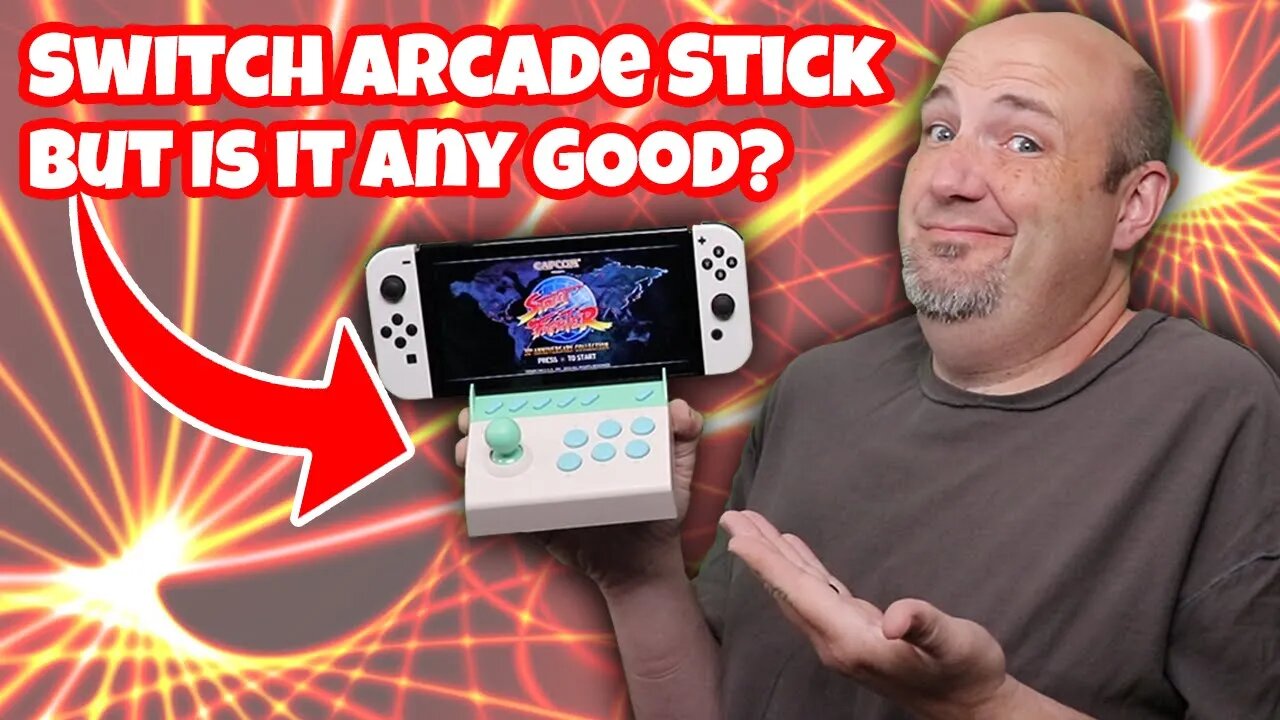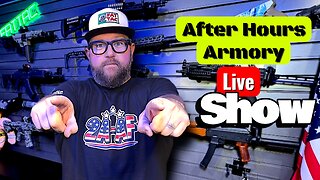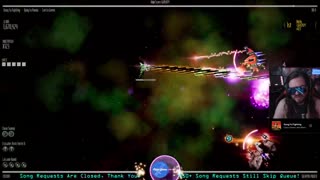Premium Only Content

Arcade Joystick For Nintendo Switch & Switch Lite, But Is It Good?
In this episode, we unbox and test out the Ipega Gladiator arcade fight stick, designed for the Nintendo Switch, Nintendo Switch OLED, and Nintendo Switch Lite.
When it comes to controllers, there are a ton of different options for the Nintendo Switch. There are pro-style controllers and different types of joy-cons, but there aren't too many arcade fighting sticks out there. The team from Ipega looks to change that with their gladiator arcade fighting stick. Designed to be plug and play and work across all models of the Nintendo Switch, Ipega recently sent us one to check out.
Out of the box, the color scheme is definitely inspired by the Animal Crossing Edition of the Nintendo Switch. It features your A, B, X, Y, L, and R buttons right at your fingertips, ZL and ZR are available on top, along with plus, minus, home, and turbo buttons. Conspicuous by its absence is the capture button, which Ipega omitted for some reason. The control stick is, well, it is weird is the best way I can describe it. It's not a micro switch, it's more similar to the analog sticks on a Pro Controller. There's not a ton of resistance here, the springs and tension could definitely be tighter. Some people may like this, I'm not the biggest fan
The Gladiator doesn't utilize any sort of external power supply, everything is gathered right off of the Switch itself. Connecting to your system is super easy, simply sit it on the USB-C port, turn on your system, and you're ready to play. I will say that, even after I had connected a system to the joystick, I could never wake up the system through the controller itself. I had to hit the power button on the system each and every time, which was kind of irritating and inconvenient.
Gameplay was a mixed bag, some games felt decent, some not so much. I will say I did not feel that the joystick had an analog response to it, it definitely felt digital. Playing fighting games, such as the 30th-anniversary edition of Street Fighter, I was able to pull off most of the moves, but the dragon uppercut was not easy to pull off. I don't know why this is, again it may be up to the gate they decided to use and the design of the left stick sensor.
Overall, the button presses were much better than the joystick performance and actually felt really good. You press a button and your character responded. The turbo actually worked very well too, as we found out with many shooters. Games like Contra, Gradius, and others that could take advantage of a rapid-fire definitely did.
Why it RoX:
- Converts any Nintendo Switch into a mini arcade machine
- Turbo functionality
- Responsive Buttons
- Good viewing angle
What could be improved:
- Joystick leaves a lot to be desired
- No USB passthrough to charge while playing
- No capture button
- Can only be used in tabletop mode
- Face buttons are spaced rather close to each other
Should you buy one?
The Gladiator arcade stick from Ipega is definitely a mixed bag. Conceptually, I love it. Execution-wise, there are a lot of things that could be improved here. The joystick just doesn't perform terrifically, and for a product where that is your main hook, you really needed to nail that and they did not. It doesn't feel like it is analog, it doesn't feel precise, and it's definitely not a micro switch. The buttons are a bit small and close together for my taste, but if you have smaller hands they might work for you. This isn't something I think that I would pick up myself out of the blue, I appreciate the effort but I think this one needs to go back to the drawing board.
#NintendoSwitch #ArcadeStick #Nintendo
The footage used in this review are used under the Fair Use laws, referenced below:
https://www.law.cornell.edu/uscode/text/17/107
Notwithstanding the provisions of sections 106 and 106A, the fair use of a copyrighted work, including such use by reproduction in copies or phonorecords or by any other means specified by that section, for purposes such as criticism, comment, news reporting, teaching (including multiple copies for classroom use), scholarship, or research, is not an infringement of copyright. In determining whether the use made of a work in any particular case is a fair use the factors to be considered shall include—
(1) the purpose and character of the use, including whether such use is of a commercial nature or is for nonprofit educational purposes;
(2) the nature of the copyrighted work;
(3) the amount and substantiality of the portion used in relation to the copyrighted work as a whole; and
(4) the effect of the use upon the potential market for or value of the copyrighted work.
The fact that a work is unpublished shall not itself bar a finding of fair use if such finding is made upon consideration of all the above factors.
(Pub. L. 94–553, title I, § 101, Oct. 19, 1976, 90 Stat. 2546; Pub. L. 101–650, title VI, § 607, Dec. 1, 1990, 104 Stat. 5132; Pub. L. 102–492, Oct. 24, 1992, 106 Stat. 3145.)
-
 14:17
14:17
RoXolidProductions
16 days agoThe BEST Xbox 360 Controller? Retro Fighters Hunter 360 Wireless Review
1061 -
 2:44:56
2:44:56
BlackDiamondGunsandGear
4 hours agoAre You that guy? / Carrying a Pocket Pistol /After Hours Armory
17.6K -
 LIVE
LIVE
Camhigby
4 hours agoLIVE - Riot Watch Portland, DC, NC
326 watching -
 2:54:58
2:54:58
CAMELOT331
6 hours agoYouTube Just Told Me I OWE THOUSANDS $ TO THEM... update
26.8K5 -
 2:00:53
2:00:53
Tundra Tactical
14 hours ago $1.95 earned🛑LIVE AT 9PM CST!! Your Government Hates Your Guns : DOJ Holds Firm On National FIREARMS ACT
18.2K -
 2:44:56
2:44:56
DLDAfterDark
4 hours ago $3.20 earnedAre YOU The Guy That Ruins Thanksgiving?? - God Guns & Gear
19.9K -
 2:58:31
2:58:31
NewsTreason
6 hours agoDECLAS w/ Rambo & Dave: Nuremberg 2.0 | MTG Exits Stage Left | Mamdani Psyop Confirmed, 8pm EST
68.5K66 -
 LIVE
LIVE
meleegames
6 hours agoSONG REQUESTS CLOSED - Melee Music - Beat Hazard 3 - Devil Inside
124 watching -
 2:13:31
2:13:31
The Connect: With Johnny Mitchell
13 hours ago $3.28 earnedIs Garth Brooks A Serial Killer? Exposing The Dark Secrets Of Country Music's Biggest Star
13.3K4 -
 1:00:49
1:00:49
MattMorseTV
6 hours ago $89.26 earned🔴Massive VICTORY in the SUPREME COURT.🔴
103K138